This post may contain affiliate links.
Gardening is not an expensive hobby if you have time and patience, infact, many plants you can grow for free. We are all feeling the pinch financially these days. Growning more fruit, vegetables, edible flowers, and herbs in our own backyard (or even indoors) is a sure-fire way to reduce food bills and save money. Each of these foods below, you can grow for absolutely nothing, provided you have OK soil, some way of making fertiliser, and a water supply (rainwater is best usually.)
Of course, a packet of seeds is cheap or you can talk a friend into giving you seeds or cuttings. The cost is minimal. But these plants and crops can be grown from the food you buy from the supermarket.
We know because we’ve done it. We are those gardeners.
All of these food plants like a warm to tropical climate. In the tropics we can grow year-round, in cooler climates you may have to grow in the summer only. In general, if there are seeds in anything you buy, try planting them, it could work, plant them as the weather is warming up, as a massive generalisation.
I’m not going to talk about trees here. Yes, you can grow trees from pips and stones but the whole process takes too many years. The crops below will see you harvesting and saving money on food a lot faster.
Here Are The Best 10 Foods You Can Grow For Free!
Gingers
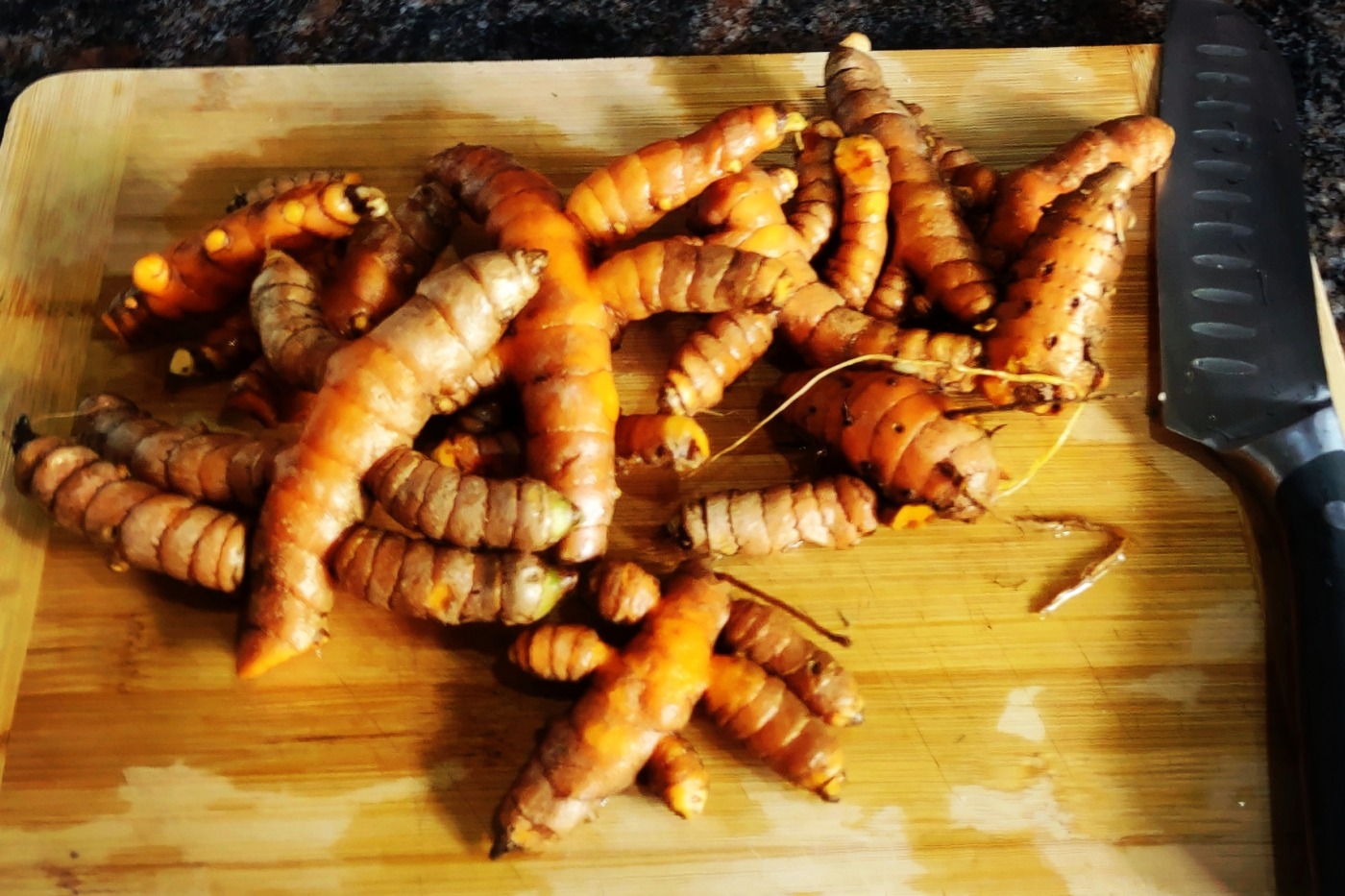
You can grow culinary ginger from supermarket or store-bought ginger. Similarly galangal and turmeric should grow for you too. They are both members of the ginger family. I’ve read that commercial ginger may be coated in a growth inhibitor but that isn’t our experience.
Every tiny piece of ginger we’ve planted has grown.
There’s no need to plant a large piece, just a small offcut from one end will be fine. If you don’t want to plant it immediately just put it in a small dish with shallow water and watch the shoots form. If your bought ginger already has little nubs, all the better, these will likely form shoots.
You can plant ginger shallow, in a wide shallow pot is good. Give it good quality soil or potting mix and water adequately, but don’t leave it sitting in a swamp. Most members of the ginger family are quite happy in the shade or partial shade.
We use raised beds a lot in the tropics to allow for better drainage. The rhizomes grow out horizontally under the surface of the soil. Ginger plants generally prefer some shade and they say it’s ready to harvest when the leaves die back and/or it flowers. This is usually May/June (early winter) for us.
We find it better to just harvest some as we need it and keep replanting pieces.
We chop turmeric very finely using a pull chopper (hand blender) and freeze it. You could also dehydrate it and grind it into turmeric powder. The same for ginger. Both are extremely good for you with anti-inflammatory properties.
Sweet Potato
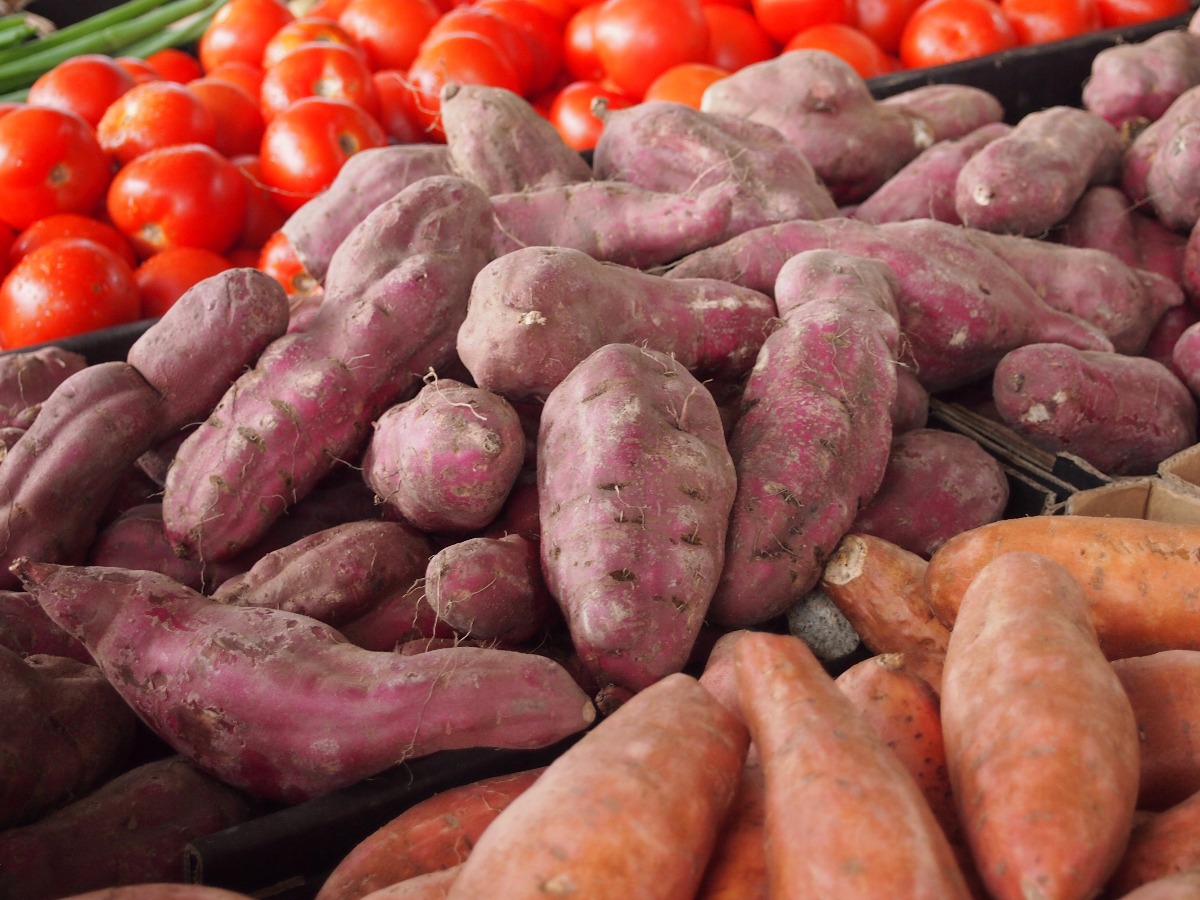
Any sweet potato you can buy at a market or supermarket, should grow. Just cut off both ends, eat the rest, and pop the ends into a saucer of water cut side down. Within a few weeks you should have shoots and leaves (slips). Plant these in soil, a large pot or raised bed and grow a crop of free sweet potatoes.
Spring Onions (Scallions)
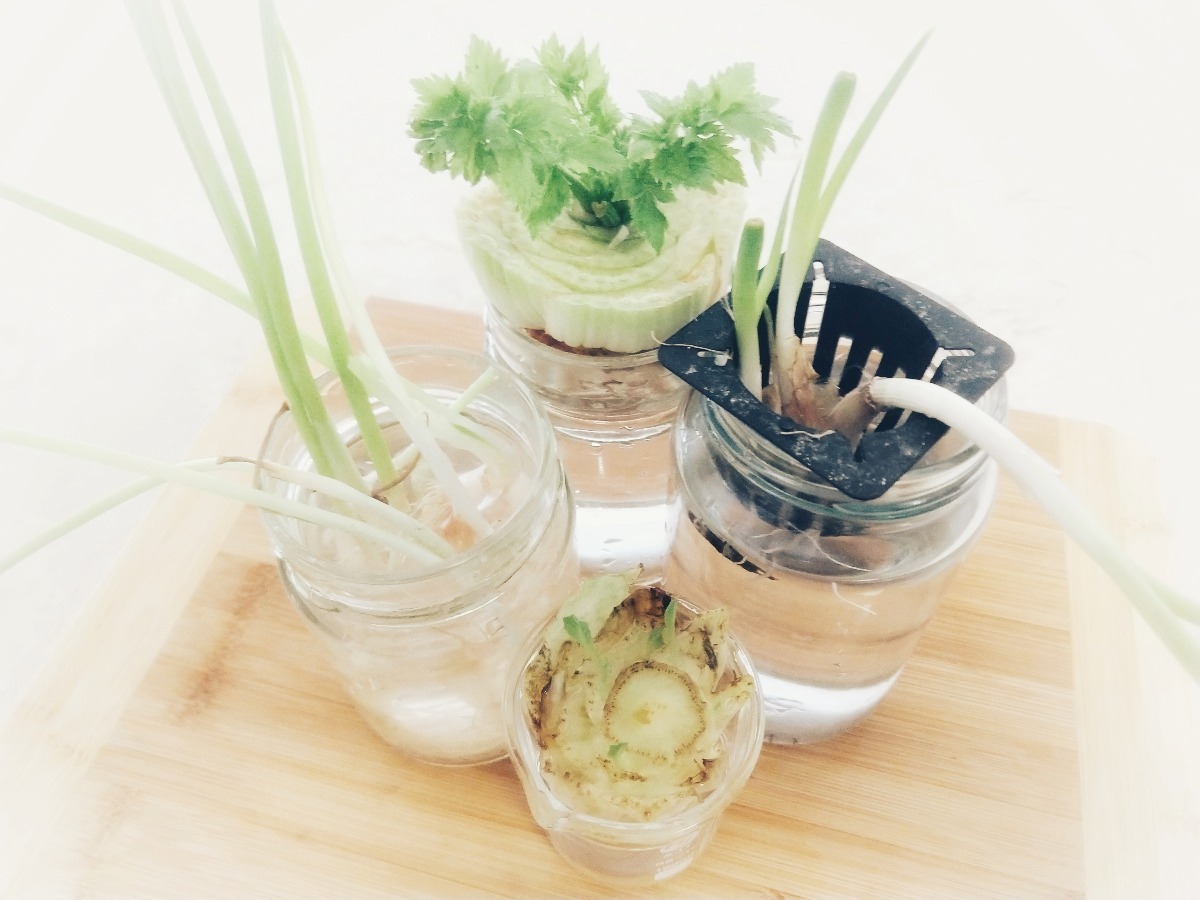
When you shop for spring onions in the supermarket, look out for bunches with plenty of white root. There is a tendency these days for producers to cut them off as high as possible, avoid these. Now take your bunch of spring onions and cut off the base of each. About 1 cm of white base with attached root is fine. This should grow!
Either stand the roots/bases in water to start growing or plant them in good compost or soil straight away. Water them and a new onion will grow. That’s 2 for the price of 1. You can keep doing this indefinitely.
More good news, you can do the same with leeks! Leeks will grow in my tropical garden, we’re now at elevation so it’s not quite as hot. In very hot places they may not, but it’s worth trying!
Celery
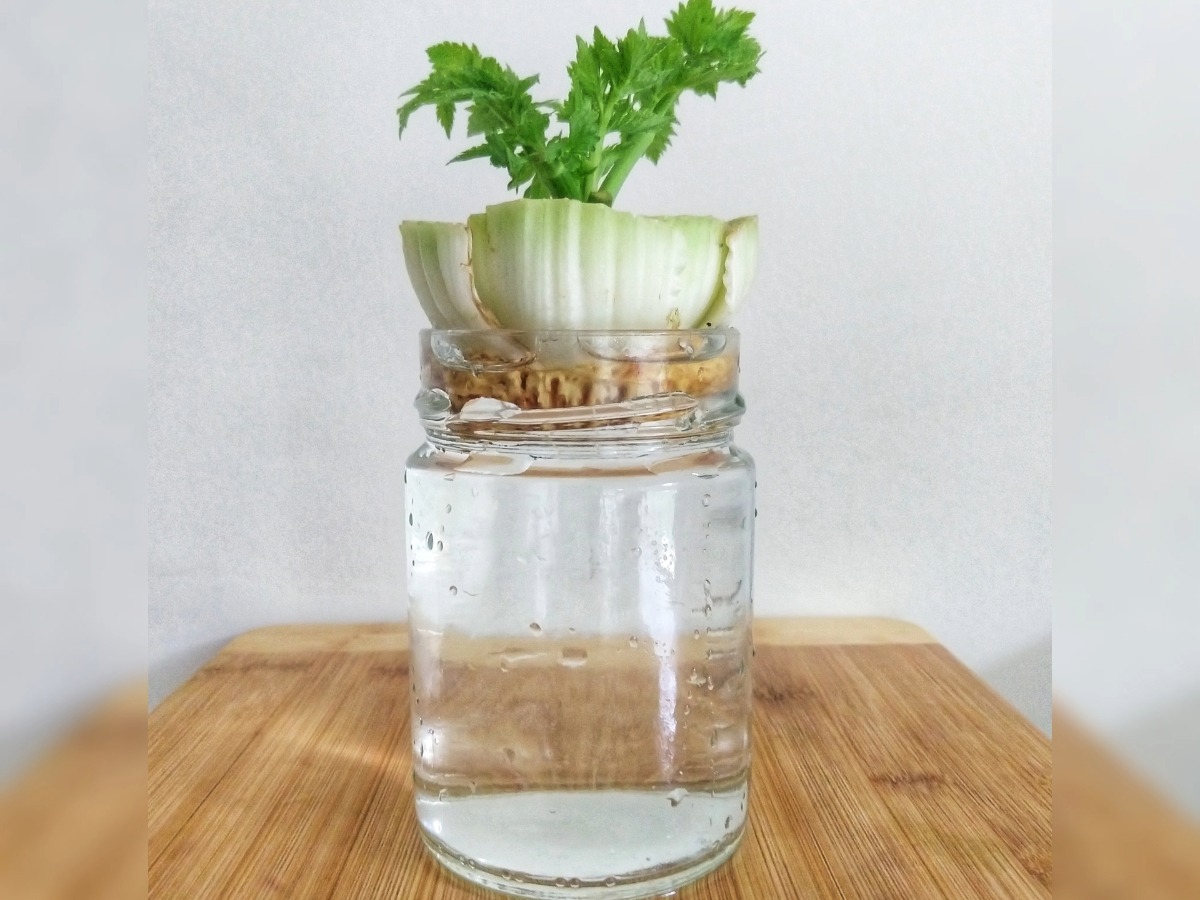
Growing new celery plants from the heads of celery you buy at the supermarket, actually gives you more useable celery, faster, than growing it from seed.
I know because I do it both ways. Celery has done very well for me in my tropical climate and even survives the wet season.
Growing celery from seed takes a long time, so if you just want some celery tops to flavour a soup or stock and aren’t looking for long stems to fill or dip, grow celery this way, for free, it really works and takes just a few weeks.
Once the celery has roots and shoots you can plant it out in your garden beds and for us, in a tropical / sub-tropical climate, it gives us celery tops for months or years even.
From seed to harvest the seed packets tell us celery takes 100 days. That’s quite a long time in the vegetable growing world.
For our warm climate celery seed should be sown from January to October, that’s late summer to mid spring. This seems a bit odd, maybe the full summer is too hot for celery to germinate. The recommended temperature for celery germination is 60F, 15C. Germination is slow with celery too, it may take up to three weeks. Temperatures lower than 30F (-1C) can damage plants, but a mature celery plant can cope with a light frost and winter temperatures. We never get a frost here so celery can grow right through winter.
Chillies
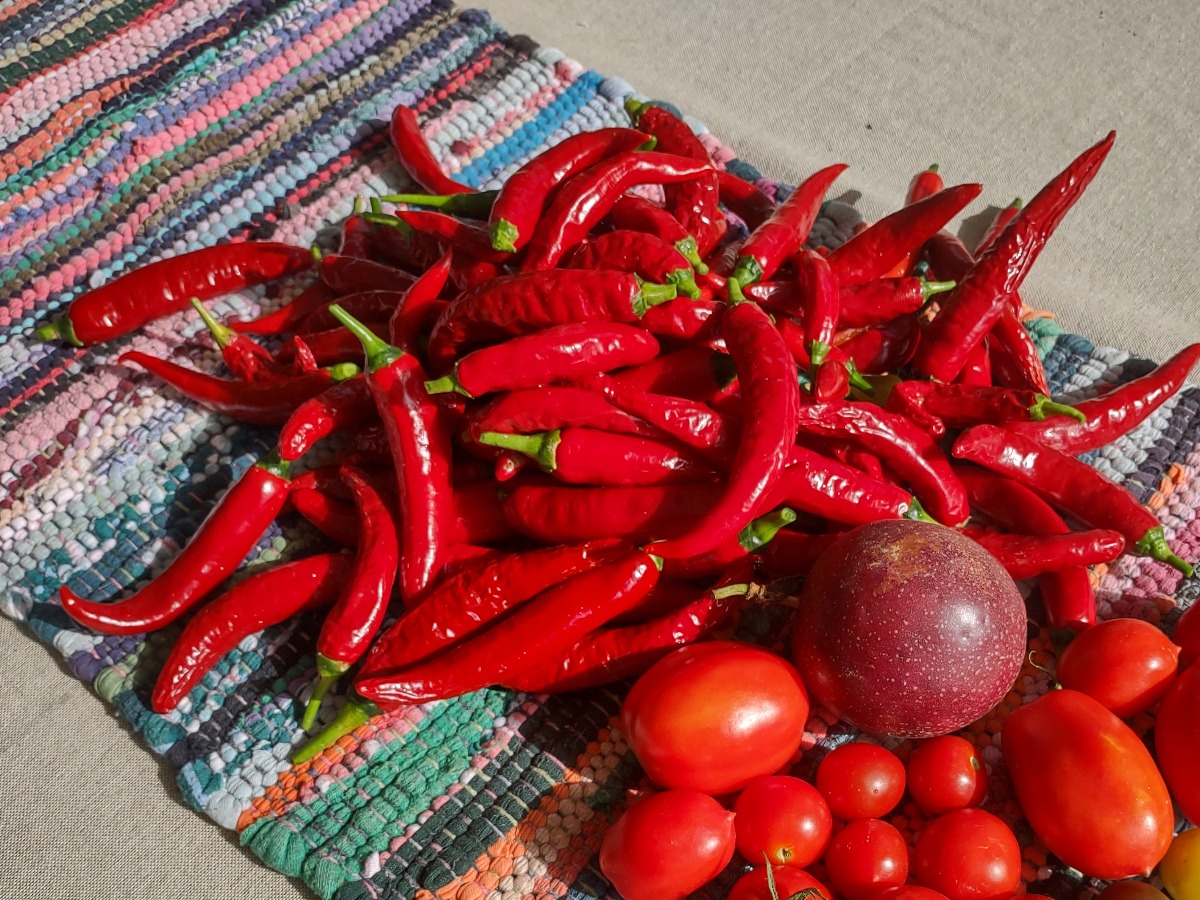
Chili peppers and all members of the capsicum family can be grown from the seeds of store-bought fruits, very easily.
All of the red chillies in the photo above came from a single supermarket chili, over 5 years ago. I haven’t bought a chili pepper, chili powder, chili pickles or sauces in years. Chilis are very expensive where I shop, but one fruit can give you dozens of plants and luckily, those plants are perennial in my region.
Fermenting or pickling your chilies should give you an abundant year-round supply through the cooler months. Alternatively dry chilies in a hanging drying net, with mesh to keep the dust and bugs off (like this one)f, or splash out on a dehydrator. I own both, they’re both useful. The hanging drier is very good for herbs.
Tomatoes
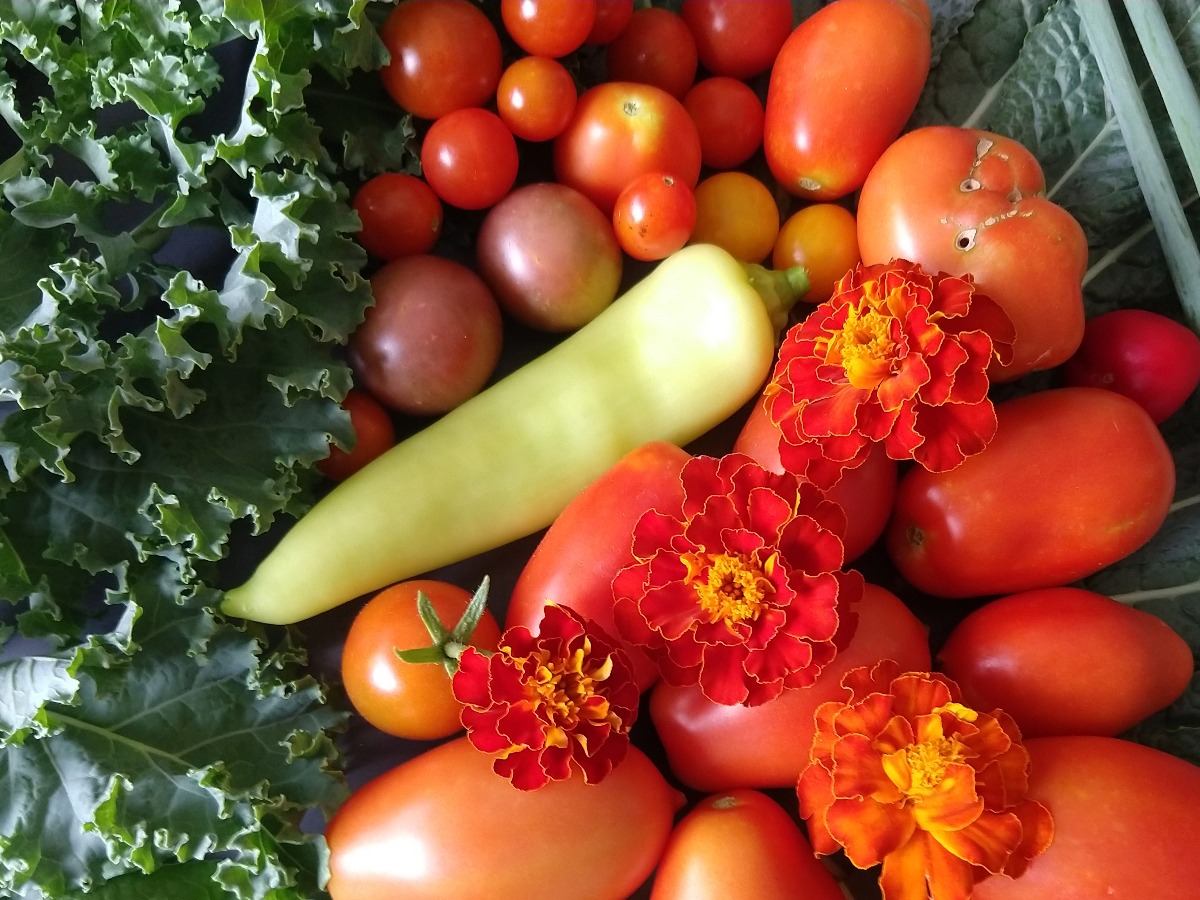
Tomato plants are well known for “volunteering”, self-seeding, all over our gardens. This is because tomato seeds are very robust and can pass through a digestive system intact.
Take advantage of how much tomato seeds really want to grow and get some seeds into moist potting soil. Do this in spring. Tomatoes don’t like extreme tropical and sub-tropical sun, in these climates, they’ll need shade in summer.
By growing some tomatoes in sunny spots, and others in shadier areas, you can have a succession of ripe tomatoes almost year-round.
Small cherry and spooner tomatoes are generally easiest to grow.
Just remember that the tomato plant may not be a replica of the tomato variety you planted.
Papaya or Paw Paw
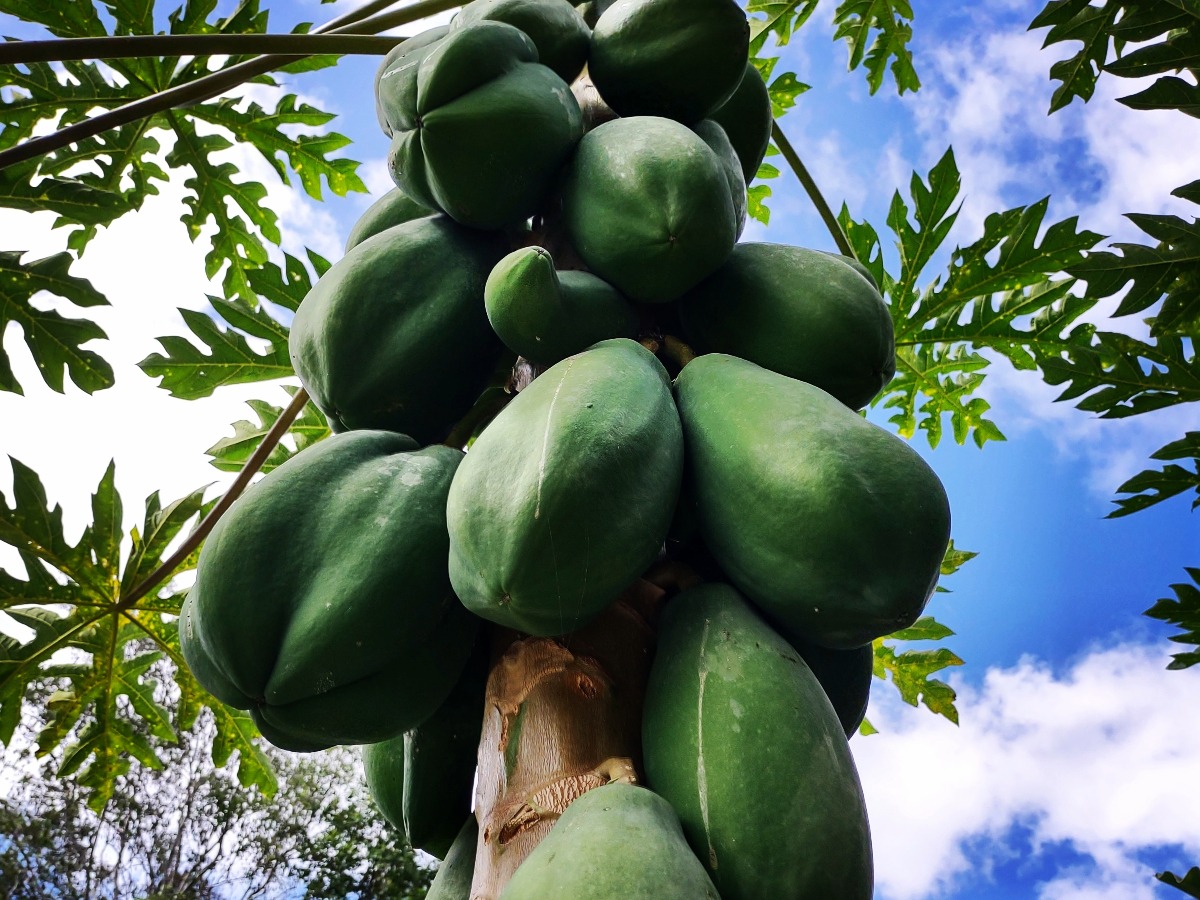
Papaya fruits, when ripe, are packed with thousands of tiny black seeds. These seeds grow really easily into new papaya plants. Just take a seed, pop it into moist soil or compost and keep it warm and moist.
You should grow quite a few papaya plants because some will be male, some female, some both. It is only female flowers that bear fruit. To find out how to tell see our photos on our post on growing papayas. Papayas are known as paw paws in Australia.
It’s best to plant papaya seeds in spring as the weather is warming up. You’ll have to wait a couple of things before harvesting your first papayas. You will need to have a very warm climate to grow papayas, they can’t handle a cold winter. American growing zones USDA zones 9B to 11 should be finefor papayas. They struggle to flower when the temperatures drop below 59F, 15C.
On our tropical homestead night-time temperatures can get down below 10C, papayas do fine. The photo above is from my garden.
The great thing about papaya is that you get a lot of Kg of carbohydrates, and they can be eaten green as a vegetable, raw or cooked, or as a sweet tropical fruit. You can even make papaya jam, it’s delicious.
Pumpkins
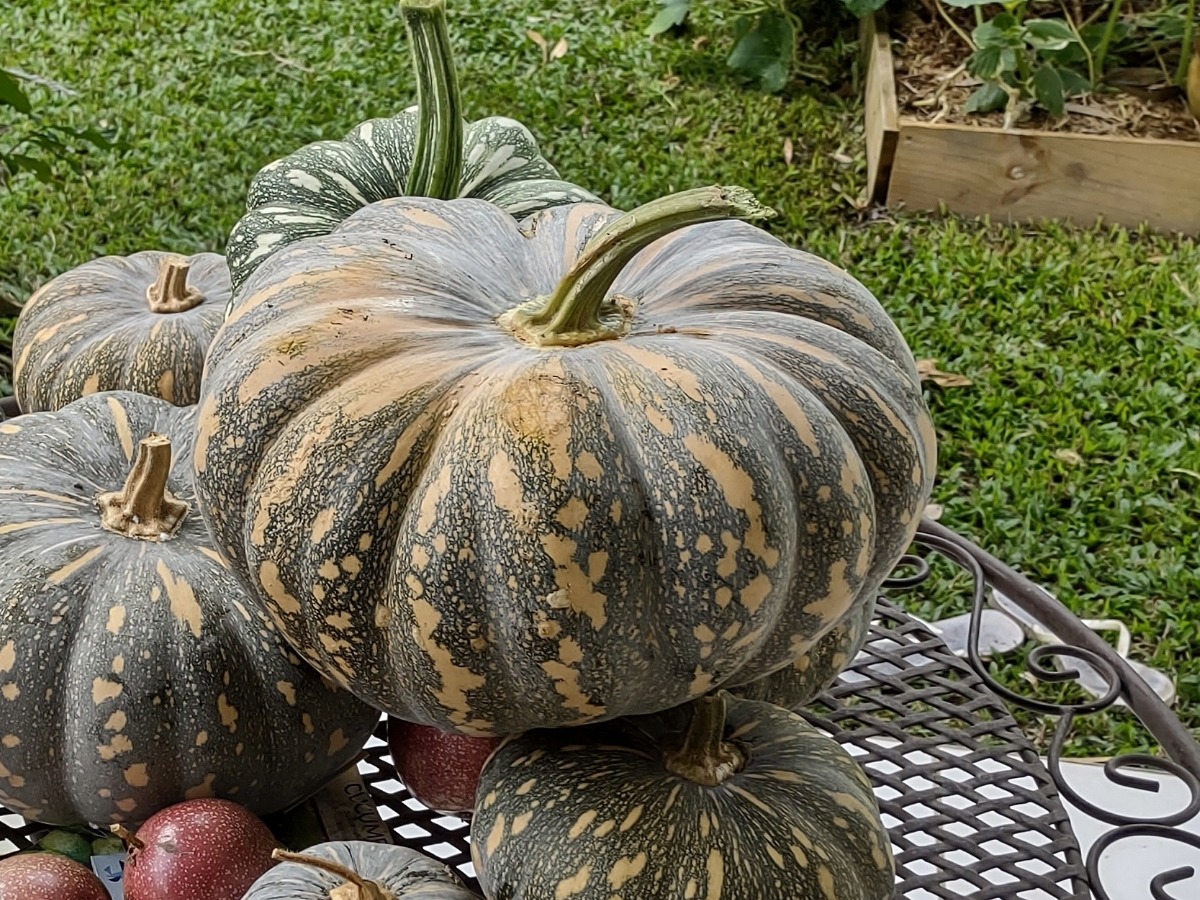
Pumpkins are another fantastic food to grow and feed yourself, for free. Pumpkins can get huge, and contain a lot of valuable carbohydtares. You can also roast the seeds for a great snack.
The problem with pumpkins is, they sprawl and take up a lot of space, it’s not a plant for a small space, although I have grown them in raised beds by encouraging them to grow around the bed and pruning them as needed.
You will need to hand pollinate pumpkin flowers, for that see the photos on our post on growing pumpkins.
Grow whatever pumpkin seeds you can find at the store, but be aware that this family cross-pollinates and doesn’t always breed true. Courgettes (zucchini) are in the same family, but in my experience are much harder to grow because they are so susceptible to mildew and bests. Young green pumpkins can be cooked like courgette.
Lemon Grass
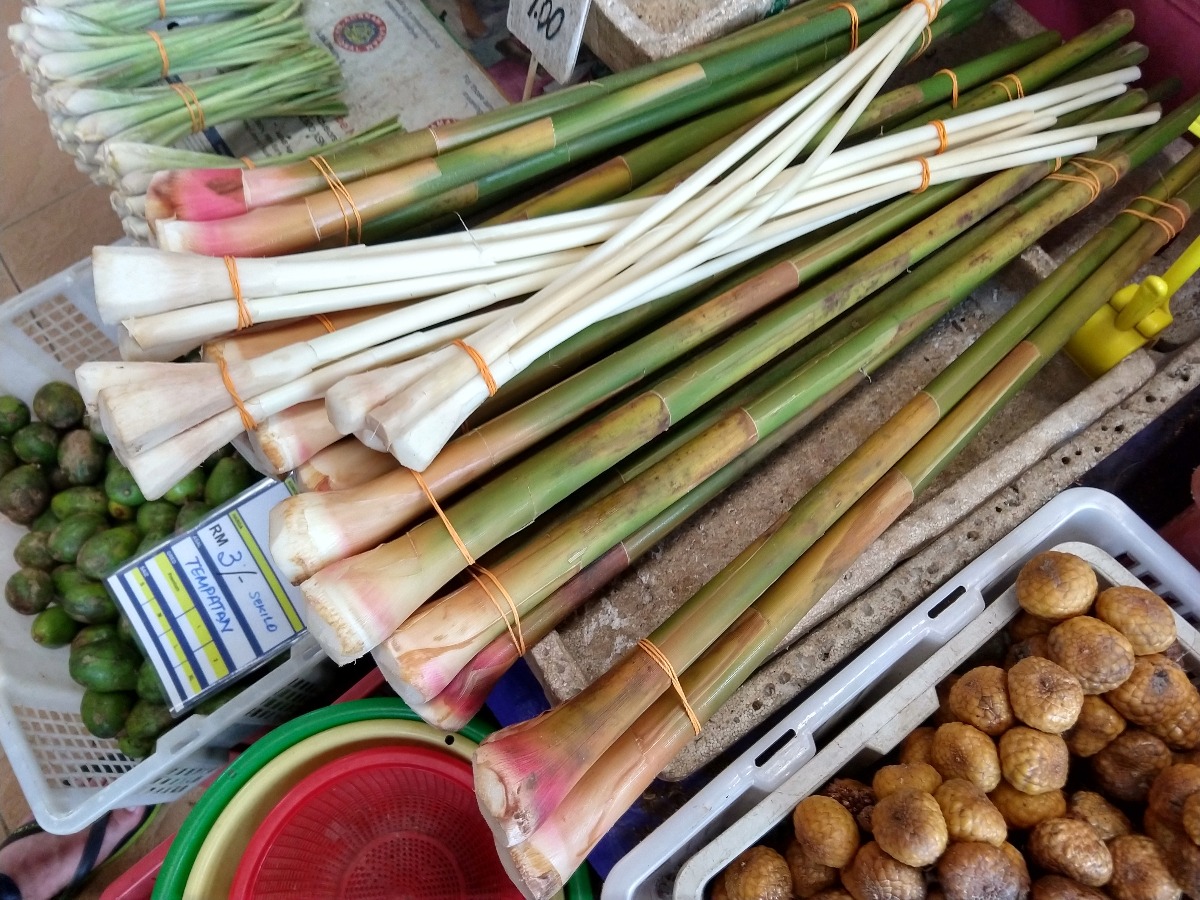
If you can find lemon grass at your local market that still has the root attached, it’s very easy to grow lemon grass, just remember this plant gets huge! It’s a perennial for us, see our post on growing lemongrass and our recipes for using it.
10 More Foods You Can Grow For Free
Pineapples will grow from pineapple tops, just stand them in water or pot them up. Remove as much fruit from the top as possible.
Many dried pulses, lentils, peas and beans sold dry in supermarkets will grow. Just soak them and plant them. You can grow bean sprouts or micro greens this way, or grow the full plant for more pulses, for instance, pigeon peas. These plants also make great animal feed.
If you buy a whole lettuce, chop off the base and stand it in water. New leaves will grow, ones it’s rooted pot it up. Remember lettuce doesn’t like very hot conditions, its a winter crop in the tropics.
A more tropical vegetable green, water spinach, is incredibly easy to root in water. If you can find some at your local market, break off pieces of root and stem and they should start growing in water. Get them in the ground once they’re rooted.
Avocado pips will grow you a new avocado tree. But be prepared to wait years!
If you have potatoes with eyes (shoots), you can grow new potato plants.
The pip or stone of just about any fruit, can grow you a new tree, just remember your tree may be different genetically to the fruit you enjoyed. This is particularly true of lemons and other citrus, so we recommend you buy a lemon tree to be certain.
In reality, just about any plant can be grown for free, you should not have to buy plants or seeds from a nursery. Build a community of gardeners and exchange cuttings and seeds, your local network will know which food plants grow best in your area. I will always give gardeners a seedling, cutting, or handful of seeds if I have them. I wouldn’t dream of asking for money. Likewise, I’ll give away pineapple or banana pups. So get to know the right people. Most gardeners want to encourage more people to grow food and become less reliant on commercial sources. The food you buy at the store has fewer nutrients than freshly picked, you’re better off growing your own. If you’re not in that situation yet, use the seeds from the food plants you buy at the store. You can grow most plants for free, if you start now, enjoy your successes and learn from your failures. You may need our tips for new gardeners.
I really really enjoy this site. Thank you for sharing your experience – it’s a mine of information ! 🙂
Bless you Claire, thanks. Google deindexed it today. Google thinks its spam. I’m at the end of my tether.